Photos of Neptune, The Mysterious Blue Planet
Sky & Telescope: Path of Neptune in 2011
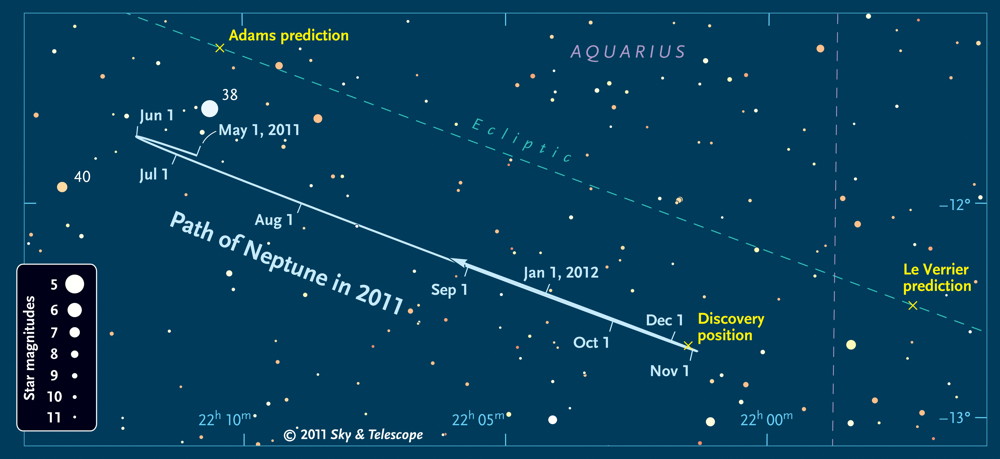
Neptune's position in the sky is plotted on this star map, along with the 1846 predicted positions of its location, and where it was eventually discovered. The blue planet resides in the constellation Aquarius for the rest of 2011.
Comet Smacked Neptune 200 Years Ago, Data Suggests
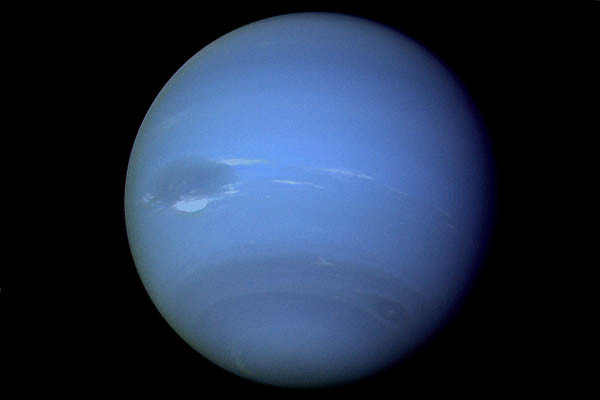
New measurements performed by the European Space Agency's Herschel infrared space telescope indicate that a comet may have hit Neptune, the outer-most planet in our solar system, two centuries ago.
Neptune's Arc
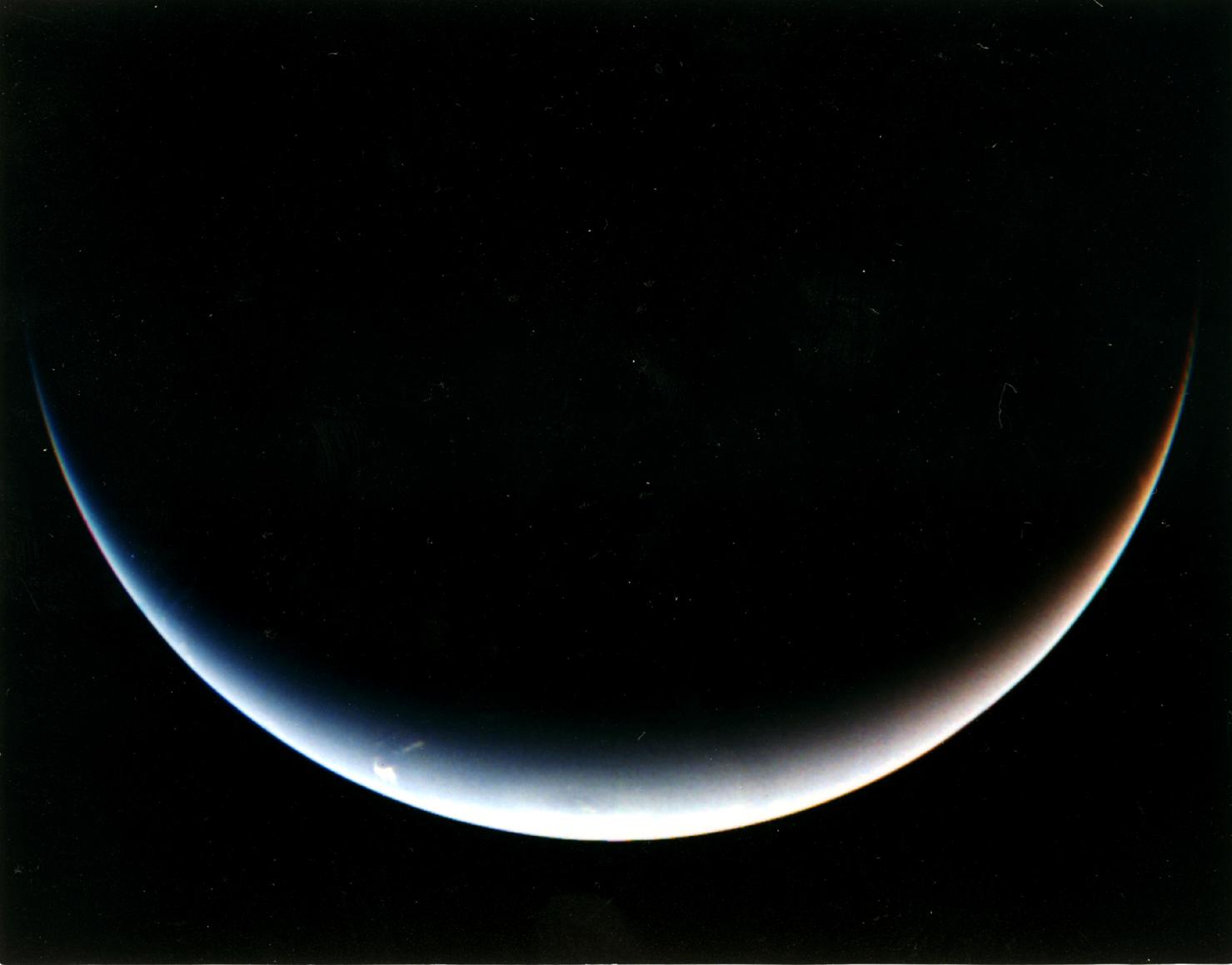
The limb of Neptune arcs into darkness in this view of the planet's south pole taken by NASA's Voyager 2 spacecraft after it flew by the planet in 1989.
Neptune Infographic
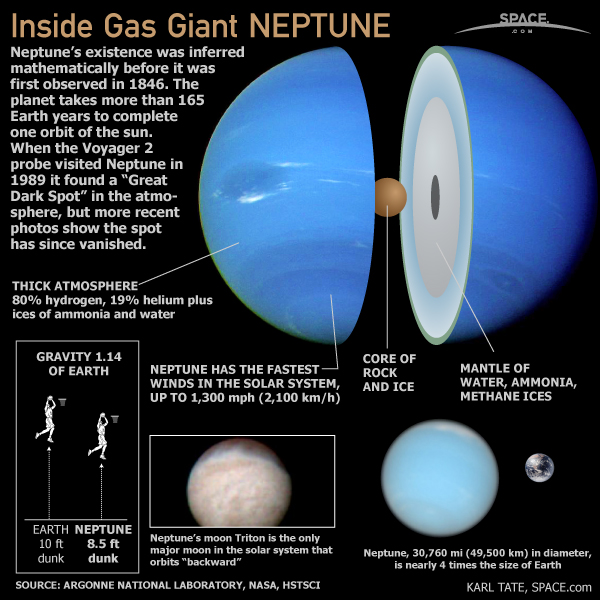
Take a look inside Neptune, the eighth planet from the Sun and has a thick atmosphere and the fastest winds in the solar system.
Neptune's Haze
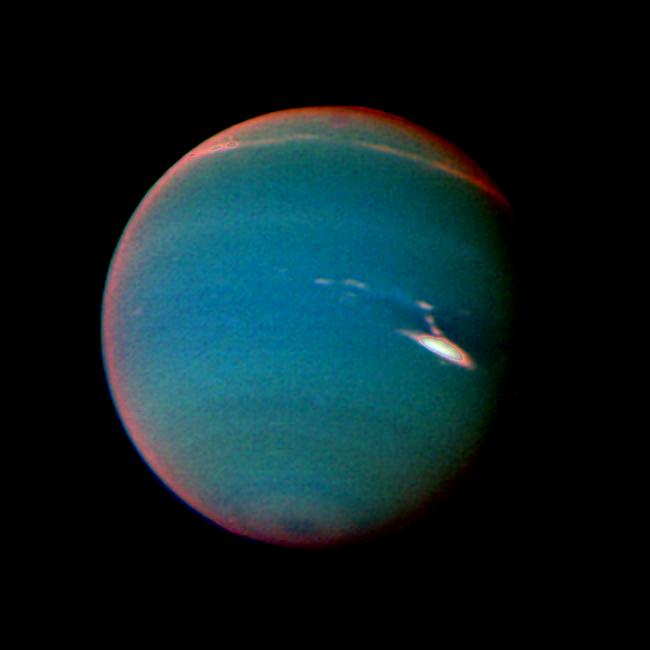
In this false color image of Neptune, objects that are deep in the atmosphere are blue, while those at higher altitudes are white. The image was taken by Voyager 2's wide-angle camera through an orange filter and two different methane filters. Light at methane wavelengths is mostly absorbed in the deeper atmosphere. The bright, white feature is a high altitude cloud just south of the Great Dark Spot. The hard, sharp inner boundary within the bright cloud is an artifact of computer processing on Earth.
Other, smaller clouds associated with the Great Dark Spot are white or pink, and are also at high altitudes. Neptune's limb looks reddish because Voyager 2 is viewing it tangentially, and the sunlight is scattered back to space before it can be absorbed by the methane.
A long, narrow band of high altitude clouds near the top of the image is located at 25 degrees north latitude, and faint hazes mark the equator and polar regions.
Get the Space.com Newsletter
Breaking space news, the latest updates on rocket launches, skywatching events and more!
Triton, Moon of Neptune
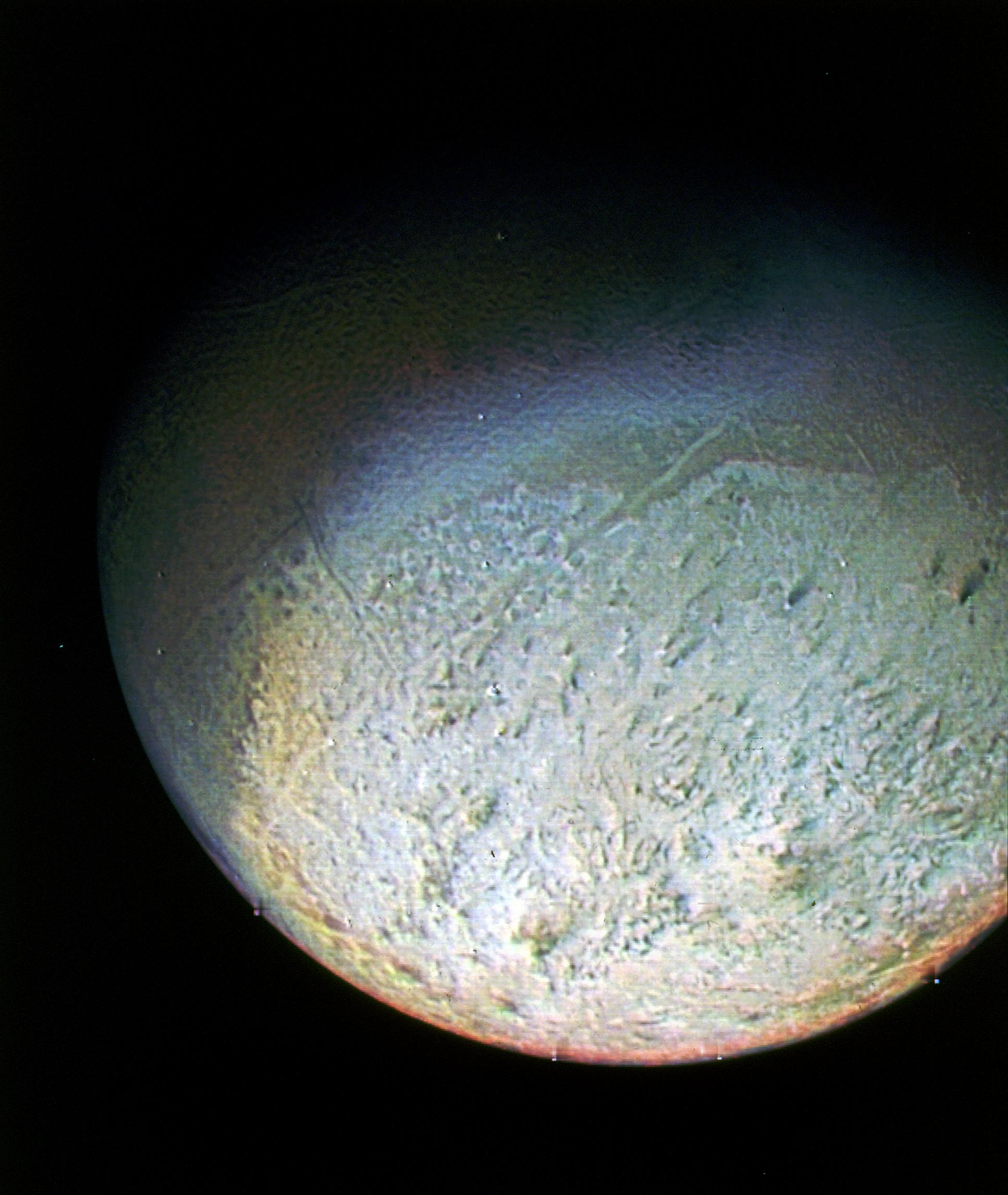
This color photo of Neptune's largest moon Triton was obtained by NASA's Voyager 2 probe on Aug. 24, 1989, from 330,000 miles away. The resolution is about 6.2 miles, sufficient to begin to show topographic detail.
Gossamer Rings of Neptune
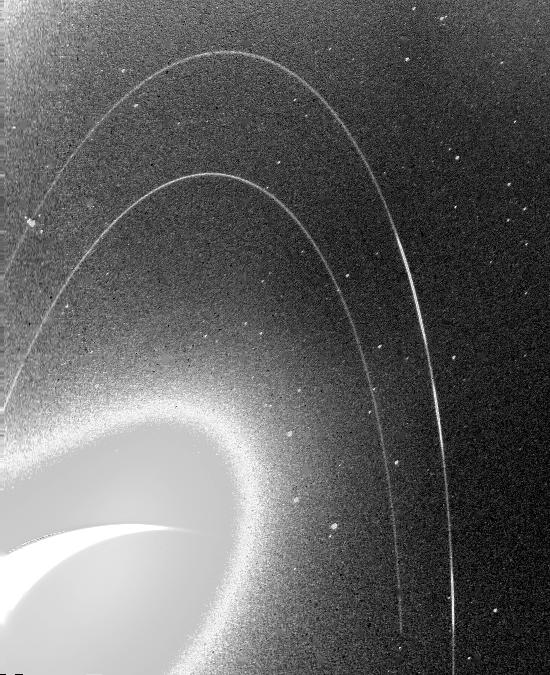
Original Caption Released with Image: This wide-angle Voyager 2 image, taken through the camera's clear filter, is the first to show Neptune's rings in detail. The two main rings, about 53,000 km (33,000 miles) and 63,000 km (39,000 miles) from Neptune, are 5 to 10 times brighter than in earlier images. The difference is due to lighting and viewing geometry. In approach images, the rings were seen in light scattered backward toward the spacecraft at a 15-degree phase angle. However, this image was taken at a 135-degree phase angle as Voyager left the planet. That geometry is ideal for detecting microscopic particles that forward-scatter light preferentially. The fact that Neptune's rings are so much brighter at that angle means the particle-size distribution is quite different from most of Uranus' and Saturn's rings, which contain fewer dust-size grains. However, a few components of the Saturnian and Uranian ring systems exhibit forward-scattering behavior: The F ring and the Encke Gap ringlet at Saturn, and 1986U1R at Uranus. They are also narrow, clumpy ringlets with kinks, and are associated with nearby moonlets too small to detect directly. In this image, the main clumpy arc, composed of three features each about 6 to 8 degrees long, is clearly seen. This image was obtained when Voyager was 1.1 million km (683,000 miles) from Neptune. Exposure time was 111seconds. The Voyager Mission is conducted by JPL for NASA's Office of Space Science and Applications. Image Credit: NASA/JPL Image Addition Date: 1999-08-08
Source of Neptune's Hot Spots Found

Thermal images show temperatures near the top of Neptune's troposphere (upper left image), with the hottest temperatures found at the south pole (see graphic, upper right). The lower two images show temperatures at higher altitudes in Neptune's stratosphere, or lower atmosphere.
Neptune Might Have Captured Triton
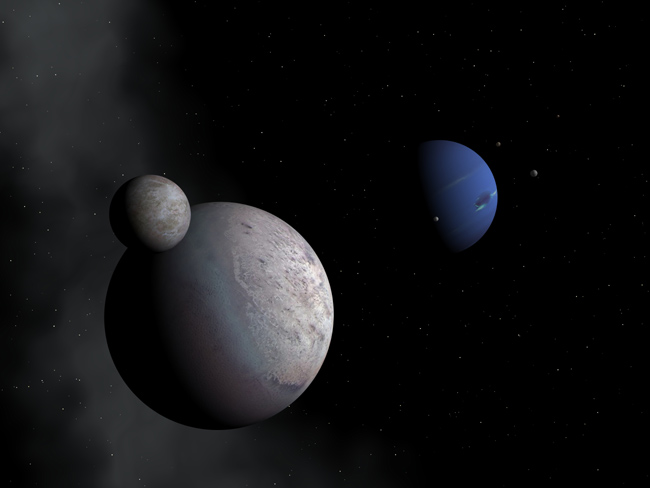
An artist's conception of Triton and its binary companion as they approach Neptune. This encounter facilitated Triton’s capture to an inclined retrograde orbit around Neptune, an event that catastrophically altered the Neptune satellite system.
Odd Cloud on Neptune Seen Splitting Into Two
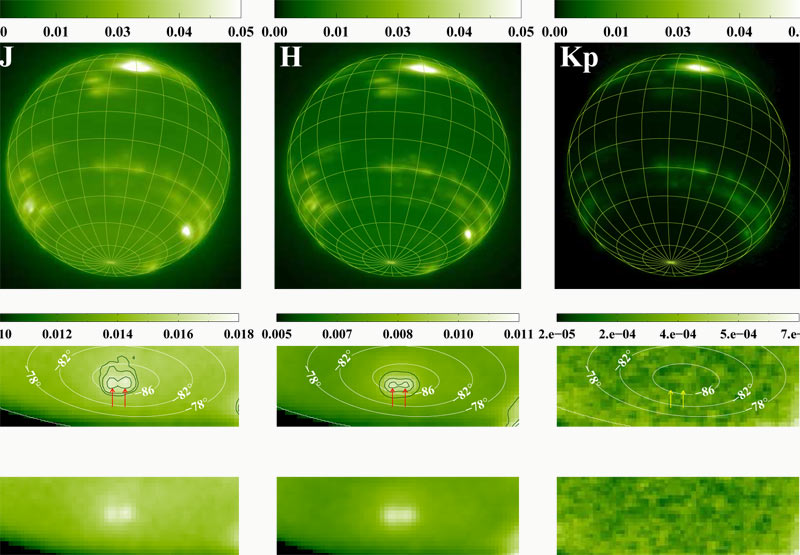
These images of the south pole of Neptune show the two spots created from a single storm converge back into one as seen by astronomers in July 2007.
Join our Space Forums to keep talking space on the latest missions, night sky and more! And if you have a news tip, correction or comment, let us know at: community@space.com.

Space.com is the premier source of space exploration, innovation and astronomy news, chronicling (and celebrating) humanity's ongoing expansion across the final frontier. Originally founded in 1999, Space.com is, and always has been, the passion of writers and editors who are space fans and also trained journalists. Our current news team consists of Editor-in-Chief Tariq Malik; Editor Hanneke Weitering, Senior Space Writer Mike Wall; Senior Writer Meghan Bartels; Senior Writer Chelsea Gohd, Senior Writer Tereza Pultarova and Staff Writer Alexander Cox, focusing on e-commerce. Senior Producer Steve Spaleta oversees our space videos, with Diana Whitcroft as our Social Media Editor.









